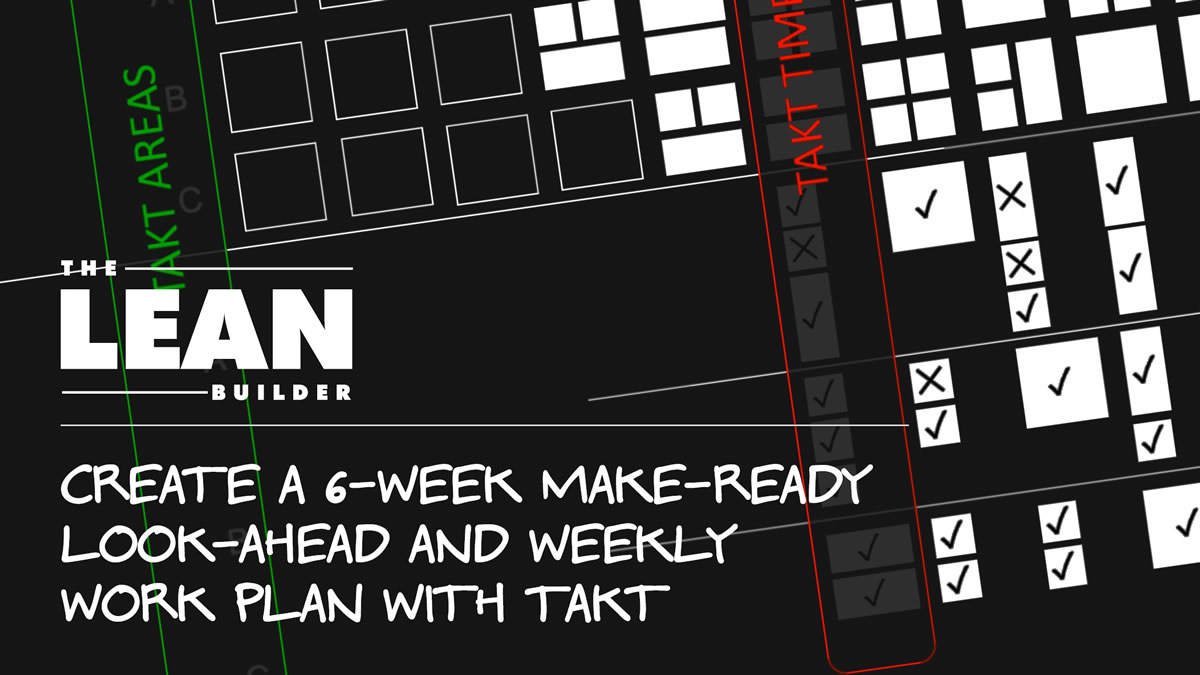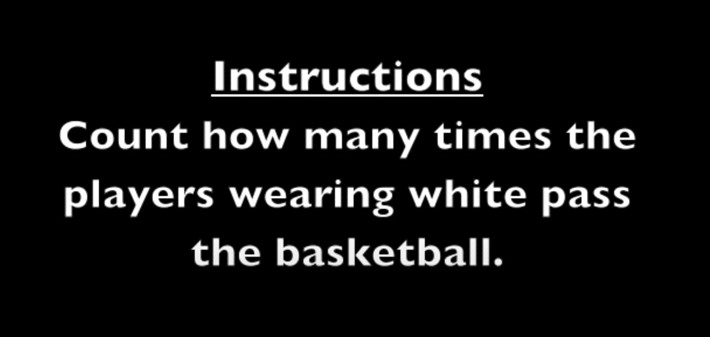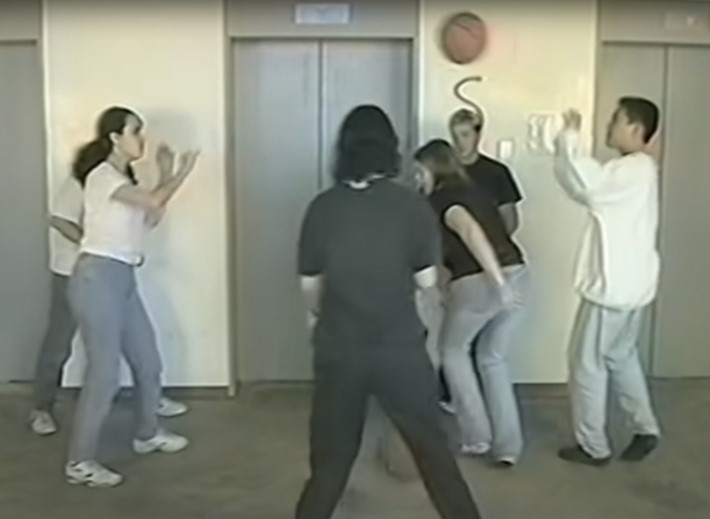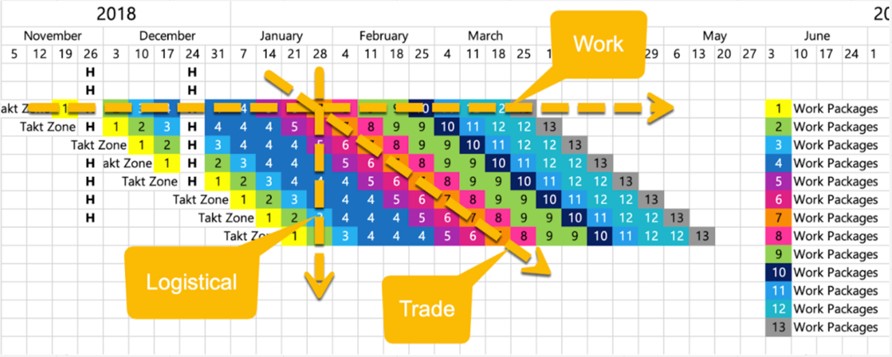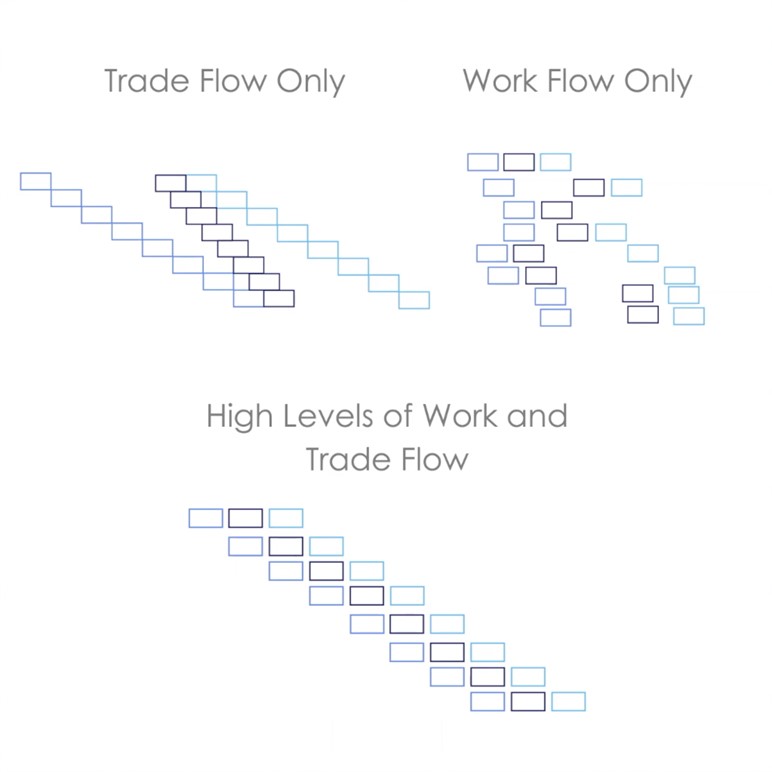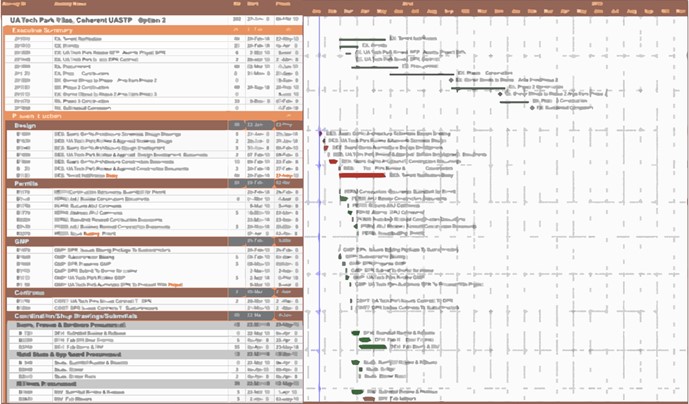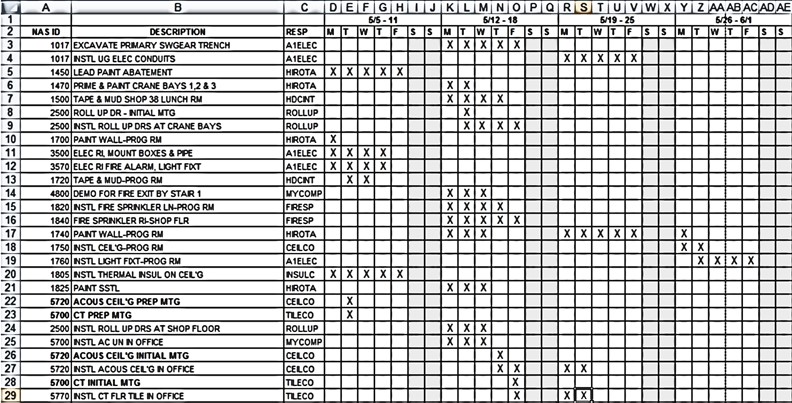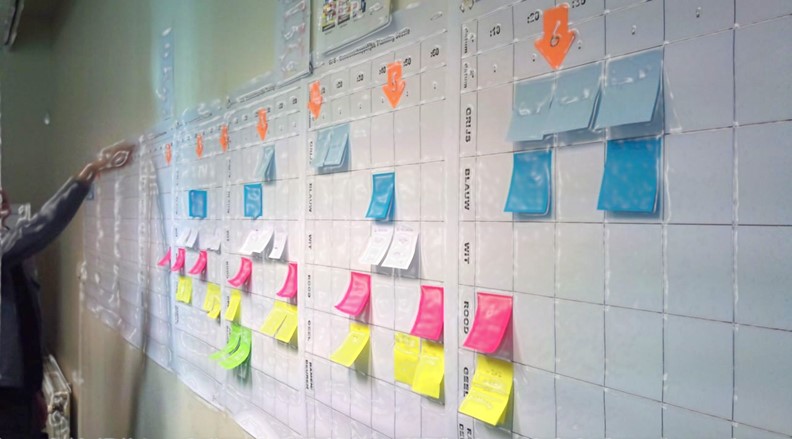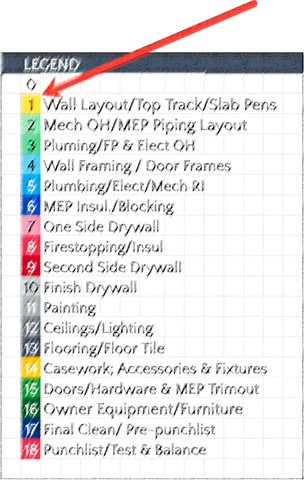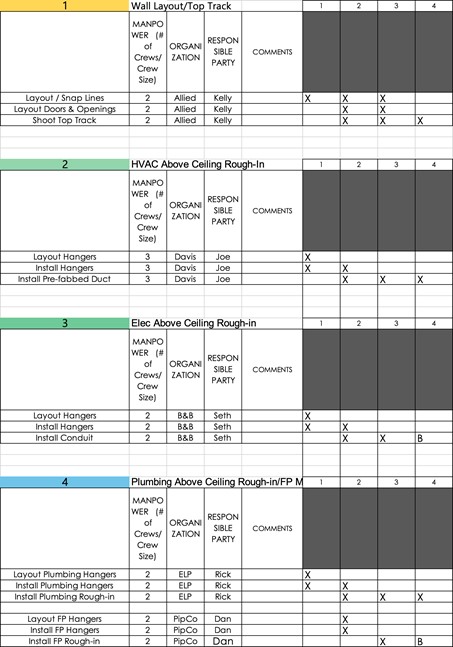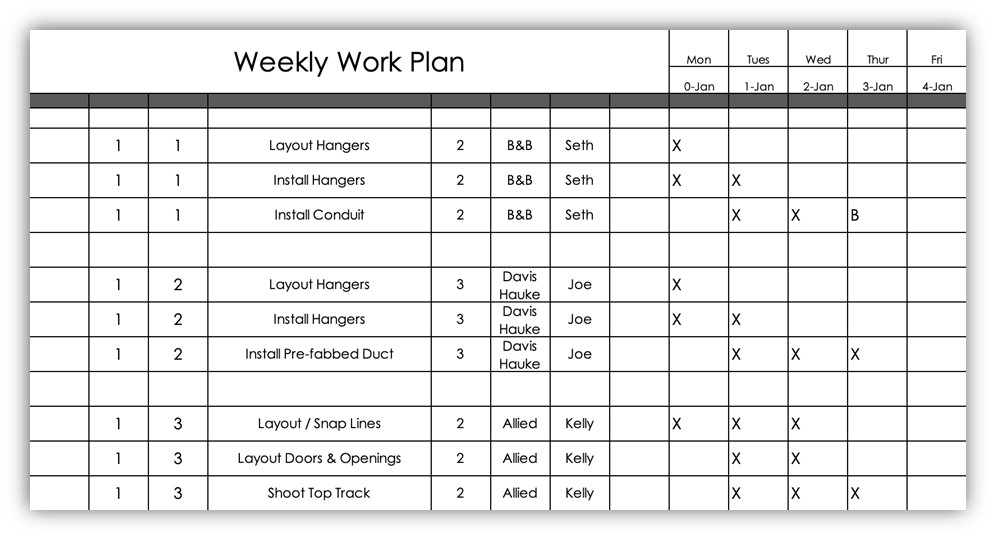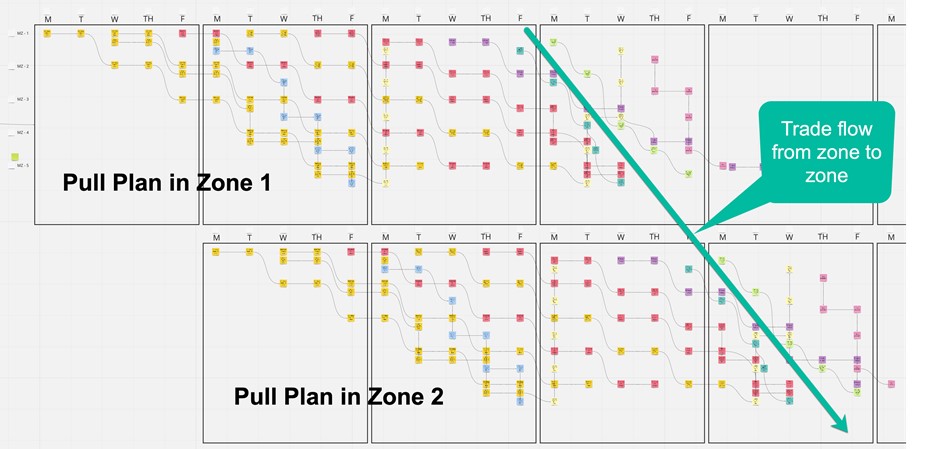Welcome back to the blog series where we discuss how Takt and Last Planner® work together to support the creation of flow on projects. In this blog post we are going to cover how Takt planning can help you create a 6-week Make-ready Look-ahead and Weekly Work Plan.
First, let me tell you a quick story. Have you ever seen these images from this video?
The video first instructs the viewer to count how many times the players wearing white pass the basketball…
Then we watch the video with rapt attention, trying to count how many times the basketball is passed…
Many of us got 14, 17, or 16. The answer is actually 15…
But is that the point?
Then we see this image, and the creators ask us if we saw the gorilla in the video…
What is the point of this video? It is to show us that we have selective attention. We only see what we are looking for. Our minds remove non-essential sensory inputs and focus only on what we are looking for. If our brains did not do this, we would go mentally insane.
This function is good for human survival, but is it good for us in construction? Sometimes not, because there is other information that is essential. So, what is the gorilla in construction that we’re not seeing?
The answer is, “Trade Flow!” Remember this crucial graphic from previous blog posts?
Work, Trade, and Logistical Flow:
Only in a Takt plan can we easily see all three types of flow. So, why is that so important? Glad you asked…
Let’s answer that by viewing the graphic below.
- On the top-left you can see what happens when we only have trade flow according to trade production rates.
- On the top-right you can see what happens when we focus on workflow only-this is what we end up with in most industry CPM schedules.
- On the bottom, you can see what happens when we have high levels of both workflow and trade flow. You basically have a Takt plan. Cool huh…?
A comparison of types of flow:
When we schedule with high levels of trade flow and workflow, we have:
- More realistic and predictable schedules
- A schedule our trades can accomplish
- A schedule that levels:
- Worker counts
- Materials
- Information
- Supervision
- An environment where workers are respected
- An environment where project management teams are balanced and can live healthy home lives
So, it would stand to reason that we would want to implement schedules like this in the field, correct? But do we do this?
Let’s find out together. Pretend you are a trade partner and the project superintendent just asked you to, “fill out your weekly work plan activities for next week,” or sent you and email that reads, “Dear Trade Partner X, please fill in your activities in the attached weekly work plan format in preparation for this week’s planning meeting.”
Great! Everything is in order.
Or so it seems.
You sit down, begin to respond to the email or request, and then ask yourself this question: “What am I supposed to be doing next week?”
If this was a video, this is the point where you would hear a record screech and the video would abruptly stop. That is a great question—what should you be doing next week? Where do you get that information?
Do you get it from the master schedule?
That is too high-level.
Do you get it from the contractor’s look-ahead?
That is so old school. We don’t even use those anymore. And the activities are not broken out how you do your work.
Do you get it from the pull plan?
Sure, but that only shows you one sequence in one area. What do you do everywhere else?
So, where do we get that information?
Here is the answer: the Takt plan!
Each Takt plan has a legend of the Takt wagons:
Each of these wagons has packaged work steps within them, as shown below. These work steps represent the detailed work that takes place in each Takt wagon within the Takt time. So, not only is the pull plan sequence a coordinated effort with the trade partner—these work steps are coordinated with the trades as well, and we only create them once.
Those template work steps by Takt wagon are used as an updated template and brought into the weekly work plan as a starting point each week.
And that is how you can know what should be done next week! It has already been identified on the pull plan, which became a part of the Takt plan, and the Takt plan has Takt wagons with detailed work steps.
It seems complex in writing, but to implement this is simple and less time consuming than our traditional ways of doing this. So, here is a comparison:
How do we typically do this?
- We are reminded to prepare for our weekly work planning meeting
- We ask the trades to populate the weekly work plan with their activities
- They guess what you want or write in what they want to do
- We spend time in the meeting coordinating if the combined plan will work
- Most of the time this plan is out of vertical alignment with the master plan
How can we do this?
- We are reminded to prepare for our weekly work planning meeting
- We send the trade a pre-populated weekly work plan that shows:
- The correct sequence based on pull plans
- Coordinated work steps within each Takt wagon
- They suggest and make minor adjustments based on that week’s needs
- We spend time in the meeting coordinating flow and discussing how to implement this plan
- The detailed plan stays in alignment with the master schedule
- We maintain high levels of work and trade flow
And here is the best part:
There are various types of steps within the Takt wagons:
- Work steps – These are normal steps listed to carry out the work.
- Quality steps – These steps prepare or control the quality of other work steps.
- Logistics steps – These are steps that prepare the logistics for the work step.
- Handover steps – These work steps ensure a proper handoff and substrate acceptance.
- Design steps – Design steps are steps that prepare the design for a particular work step.
- Defect steps – These steps must be added to the Takt time, Takt control system, weekly work plan, or sprint to fix defective work a second time.
- Cost steps – These steps are used to map out any buyout, pricing, payment, or considerations needed. (Payment approved by work packages that have steps for cost would be a Lean way of cash flow for the owner, GC and trade partners.)
All of them can be used to populate a solid sequence of activities. The genius of the system is that we can add quality steps or design steps for Takt wagon 3 into Takt wagon 1 to prepare further in advance. And when Takt wagon 1 automatically shows up on the weekly work plan, it is triggering work to be prepared farther down the road.
This is the genius of the Takt planning system.
So, how does Takt support Last Planner® and weekly work planning?
- The Takt plan provides the coordinated detail that initially creates the weekly work plan
- That detail originated from a pull plan.
- That detail was created by the trade partner initially as a template set of work steps.
- The trade partners then make minor adjustments.
- This is coordinated in the weekly work planning meeting.
- The team executes the plan and maintains high levels of trade and workflow.
If this does not happen, we will be guessing and doing work without flow.
As I said in the last blog post: pull plans are good, but they only show one sequence in one area typically. Pull plans in a Takt-ed system are shown in comparison to each other and allow us to see the gorilla-trade flow. This is demonstrated in the picture below. If you create weekly work plans this way, you will automatically create them with flow!
We get so focused on workflow, that we do not see how trades move from area to area. This is a mistake; we need to attune our eyes to see this as our #1 priority.
Trade flow is the flow unit of construction. It is the key consideration. In manufacturing plants, the car or item flows through the factory and becomes the flow unit. In construction, the building is stationary, and the trades move through the building. The trades are the flow unit. And if trades are the flow unit, we must see their flow, so we can optimize it.
I’ll share this quote: “You cannot manage what you cannot measure.” But have you heard this one: “You cannot manage what you cannot measure, and you cannot measure what you cannot see!” This is what Takt does for you. Takt will not fix your problems, but it will show them to you so you can fix them. It allows you to see, remove, and absorb roadblocks. Additionally, because it is a planned flow system, it allows you and your team to focus less on when things will happen, and more on how you can make them happen.
Are you still flowing with your make-ready look-ahead plan and weekly work plan, or are you randomly guessing what must be done and pushing trades past their capacity? Stay with us for the next post where we discuss roadblock removal!

